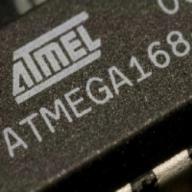1.Classify the following substances as acid or base according to Arrhenius
definition:
(a) H2SO4
(b) Ba(OH)2
(c) LiOH
(d) HF
2. Classify the following substances as acid or base according to Brønsted-Lowry
definition:
(a) NH3
(b) H2CO3
(c) K2CO3
(d) HNO3
3.Given that the Kb of ammonia (NH3) is 1.8 X 10 X 5 and Kb of dimethylamine
((CH3)2NH) is 5.9 X 10 X 4, which of them is a stronger base? Explain your
answer briefly based on the values of base dissociation constant (Kb).
4. For each of the following reactions:
(a) aluminium oxide + dilute sulphuric acid
(b) calcium hydroxide solution + dilute nitric acid
(i) Write a balanced chemical equation for the reaction.
(ii) Write a balanced ionic equation for the reaction.
5. What is the pH of 5.04 X 10-3 M HI? Is the solution neutral, acidic, or basic?
6. Citric acid (H3Cit) and sodium citrate (NaH2Cit) are common acidic buffer
system found in some food products such as jam. The main function of the buffer
system is to maintain a specific range of pH in food during processing or storage.
The working equation of such buffer system is as follows:
H3Cit^- (aq) <--- > H+(aq) + H2Cit^-(aq)
(a) Which chemical agent in the above equation is used to remove extra acid
added into the buffer? How does it work?
(b) Which chemical agent is used to remove extra base added into the buffer?
Explain briefly the working principle.
7. 5.32 g of sodium carbonate (Na2CO3) was dissolved in water and the solution was made up to 250.0 cm3 in a volumetric flask. Calculate the concentration of this standard solution expressed in:
(a) g dm3;
(b) molarity (M).
(Given: Molar mass of Na2CO3 = 106.0)
chem chem chem
2013-12-12 3:01 am
回答 (2)
2013-12-13 7:35 am
✔ 最佳答案
1.(a) acid - dissociated in water to give H⁺ ions.
(b) base - dissociated in water to give OH⁻ ions.
(c) base - dissociated in water to give OH⁻ ions.
(d) acid - dissociated in water to give H⁺ ions.
****
2.
(a) base - NH3 gains a proton to form NH4⁺.
(b) acid - H2CO3 loses a proton to form HCO3⁻.
(c) base - CO3²⁻ gains a proton to form NH4⁺.
(d) acid - HNO3 loses a proton to form NO3⁻.
****
3.
(CH3)2NH is a stronger base because it has a greater Kb.
****
4.
(a)
(i) Al2O3 + 3H2SO4 → Al2(SO3)2+ 3H2O
(ii) Al2O3 + 6H⁺ → 2Al³⁺ + 3H2O
(b)
(i) Ca(OH)2 + 2HNO3 → Ca(NO3)2+ 2H2O
(ii) OH⁻ + H⁺ → H2O
****
5.
HI is a strong acid which is completely ionized in water to give H⁺ ions.
[H⁺] = 5.04 x 10⁻³ M
pH = -log(5.04 x 10⁻³) = 2.30
pH < 7, the solution is acidic.
****
6.
(a)
H2Cit⁻ is used to remove extraacid. H2Cit⁻ ions react with H⁺ ions to give H3Citmolecules. When the concentrations of H2Cit⁻ and H3Cit are sufficientlyhigh, the change of [H2Cit⁻] and [H3Cit] are negligible and thus pH is almost unchanged.
(b)
H3Cit is used to remove extra base. H3Cit molecules reactwith OH⁻ ions to give H2Cit⁻ ions. When the concentrations of H3Cit and H2Cit⁻ are sufficiently high, thechange of [H3Cit] and [H2Cit⁻] are negligible and thus pH is almost unchanged.
****
7.
(a)
Concentration = (5.32 g) / [(250/1000) dm³] = 21.28 g dm⁻³
(b)
Concentration = [(5.32/106.0) mol] / [(250/1000) dm³] = 0.201 mol dm⁻³
2013-12-13 00:25:22 補充:
發問時,點數已扣除,刪除問題只會損人不利己。
參考: 胡雪, 胡雪
2013-12-13 4:33 am
1.Classify the following substances as acid or base according to Arrhenius
definition:
(a) H2SO4 acid
(b) Ba(OH)2 base
(c) LiOHbase
(d) HFacid
2. Classify the following substances as acid or base according to Brønsted-Lowry
definition:
(a) NH3base
(b) H2CO3 acid
(c) K2CO3 base
(d) HNO3acid
3.Given that the Kb of ammonia (NH3) is 1.8 X 10 X 5 and Kb of dimethylamine
((CH3)2NH) is 5.9 X 10 X 4, which of them is a stronger base? Explain your
answer briefly based on the values of base dissociation constant (Kb).
((CH3)2NH) is a stronger base because of its larger Kb.
5. What is the pH of 5.04 X 10-3 M HI? Is the solution neutral, acidic, or basic?
pH = -log(5.04×10⁻³) = 2.29
(acdic)
definition:
(a) H2SO4 acid
(b) Ba(OH)2 base
(c) LiOHbase
(d) HFacid
2. Classify the following substances as acid or base according to Brønsted-Lowry
definition:
(a) NH3base
(b) H2CO3 acid
(c) K2CO3 base
(d) HNO3acid
3.Given that the Kb of ammonia (NH3) is 1.8 X 10 X 5 and Kb of dimethylamine
((CH3)2NH) is 5.9 X 10 X 4, which of them is a stronger base? Explain your
answer briefly based on the values of base dissociation constant (Kb).
((CH3)2NH) is a stronger base because of its larger Kb.
5. What is the pH of 5.04 X 10-3 M HI? Is the solution neutral, acidic, or basic?
pH = -log(5.04×10⁻³) = 2.29
(acdic)
收錄日期: 2021-04-27 20:33:11
原文連結 [永久失效]:
https://hk.answers.yahoo.com/question/index?qid=20131211000051KK00131

